 |
| Saint Paul Village |
Our WINGS guides, and half of the birders were stranded
on Saint Lawrence Island on Saturday, due to the weather, and so didn’t make
the Sunday flight out to the Pribilofs.
 Luckily,
WINGS had made arrangements for the ‘local’ guides to lead us on this amazing
tour. Our tour leaders were Sulli
Gibson, Alex Harper, and Marc Kramer from Saint Paul Island Tour, which is
fully owned by TDX Corporation, the Alaska Native Corporation.
Luckily,
WINGS had made arrangements for the ‘local’ guides to lead us on this amazing
tour. Our tour leaders were Sulli
Gibson, Alex Harper, and Marc Kramer from Saint Paul Island Tour, which is
fully owned by TDX Corporation, the Alaska Native Corporation. |
| Our Guides: Marc, Sulli, and Alex |
Then, on the afternoon of Tuesday the 10th, the remainder of the WINGS birders arrived on a belated plane. They’d had to stay over at Gambell, then made it to Anchorage, where they birded for a couple of days prior to making it to the Pribilofs. The plane-load included Dave and Tammy McQuade, who are doing their third Birding Big Year in a row! Our WINGS tour leaders could not make the plane, as it was full, so we birders all got to finish the tour with Sulli, Alex, and Marc.

Our birding days start with our waking at the King Eider Hotel. I was usually up early enough to make a pot of coffee for us caffeine addicts.
Then, we got picked up and taken to breakfast at the Trident Seafoods' cafeteria at daybreak.
Trident has a fish processing
plant on the island. In the summer, they
process halibut and employ about 30 people.
The big season is in the winter during crab season when the factory
employs 300 seasonal employees. This is
the only “restaurant” on the island, and draws customers from the fish plant
employees, the locals, and we visiting birders.
The food is cafeteria style, and reflects the diets of us “Anglos”, as
well as some interesting Asian and Filipino cuisine.
Then we’d load into vans to check out birding locations
around the island. On the way out of
“town”, we’d often stop at the Salt Lagoon and English Bay, where depending on
the tide, we could view the mudflats for shorebirds.
Here is a Pacific Golden Plover hunting for
its breakfast of polychaete worms. |
| It's not just the location, it's the ambience . . . |
 On Monday, we’d made an effort to re-locate a Jack Snipe
that had been seen in the Zapadni slough east of Antone Lake last week, and started to
get a feel for the lay of the land on the island.
On Monday, we’d made an effort to re-locate a Jack Snipe
that had been seen in the Zapadni slough east of Antone Lake last week, and started to
get a feel for the lay of the land on the island.When the “Gambell crew” arrived we tried again, to no avail.
 |
| What? No Snipe? |
Walking narrow transects through the wetland proved unsuccessful.
After several attempts, I recommended possibly dragging a rope through (actually, over) the marsh vegetation, as that technique can flush a bird without injuring it or frightening it too much.
When the rope just rode up over the sedges, we tried weighting it down a bit with some fishing floats that we’d found washed up on the beach.
But, still, we didn’t flush the snipe for the group, although the guides really worked to find it for us.
The guides had re-found the bird a couple of times, just not when the birders were present. So, we filed into the slough again and again.
We did see other ‘shorebirds’ in the slough,
including phalaropes and my “Lifer” Sharp-tailed Sandpiper. This had been a “nemesis bird” for me for
years, and I was pleased to finally have seen one; the first of several on the
island.
Finally, on Wednesday afternoon, we made yet another
attempt, walking our tight transects through the area the bird had been seen
earlier.
Then Alex and Sulli tried
expanding the search area a bit, and we were rewarded with the bird flushing
and flying a short way, landing again at the edge of some sedges. |
| Sharp-tailed Sandpiper |

Finally the snipe flushed again, giving the
entire group a view of this tiny snipe with bold, golden mantle stripes, white
trailing edges to the secondaries, light underwings, and a short bill.This was a Life Bird for many of us, my 856th
“World Life Bird” and 653rd in the ABA Area. My photo was pretty ‘fuzzy’ but Tammy McQuade got an
identifiable shot.
One of the spots we check daily is the large line of
stacked metal crab pots (more like big cages) that are used during the winter
months to catch Dungeness crab.
 |
| My crappy shot of a Life Bird - the Jack Snipe! |
The ‘protocol’ for birding the pots is that most of the group would take positions to look into and along the rows of traps.
A birder or two would go around to the back, while one of the guides would pass in-between the rows of pots, tapping a stick, and hoping that a bird would pop out into the open to see what was up with all the commotion!
We’d usually see the local endemic subspecies of Pribilof Gray-crowned Rosy Finches and Common Redpolls here.
 |
| Pribilof Gray-crowned Rosy Finch |
 |
| Common Redpoll |
 |
| Hiding amongst the rocks . . . |
In the spring, the cliffs of Saint Paul Island are filled with nesting seabirds.
 |
| Of course, there are fewer birds remaining in September |
 |
| Red-legged Kittiwake on left, two Black-leggeds at right |
 |
| Immature Red-legged Kittiwake |
The Black-legged Kittiwake is more familiar to most of us birders. These are also common nesting birds here on the islands.
The Kittiwakes were not restricted to the cliffs, as we would see them almost wherever there was water. Here, a flock of both species takes off from Pumphouse Lake.
Northern Fulmars are an abundant breeding bird on the islands. Most of the Fulmars on these cliffs have the pale gray plumage which I’m used to seeing only a few of while on pelagic birding trips out of Westport, Washington.
There were a few of the darker gray color morphs flying about.
In the Fulmar populations of the Pacific, light-plumaged birds tend to predominate to the north, and dark-plumaged birds to the south.
Bering Sea colonies have few dark morphs (0 - 0.2%), whereas Fulmars breeding in the Aleutians are mostly dark morphs (99%), and the gulf of Alaska and B.C. colonies are 75-85% dark.
This is the opposite of what occurs in the Atlantic populations, where the dark-morph birds are more southerly and the light-phase birds more northerly in distribution.
Interestingly, a 2015 paper by Kerr and Dove recommends that the amount of genetic difference between the Pacific and Atlantic birds warrants elevating the Pacific population to a separate species.
Here at the seabird cliffs, also, I “twitched” other “Life” Birds, including the Thick-billed Murre.
This murre differs from the Common Murre by having a bit heavier bill, and having a white line at the gape of the bill, which the Commons lack.
The Red-faced Cormorant is another Pribilofs specialty, and was a “Lifer” for me.
These birds have thicker necks than the similar-sized Pelagic Cormorants, but their thicker necks reminded me a lot of Brandt’s Cormorants, which are common nesters on the West Coast of the US. The red faces of these birds as we saw them in September is muted from what I’d expect during the Spring nesting season.
And Puffins!! East Coast birders wishing to see our Left Coast Tufted Puffin have a few places, such as at Haystack Rock in Oregon, where they are regularly seen.
Here, it was fun to see them sharing the cliffs with the Horned Puffins.
The Horned Puffin is a relatively difficult bird to see along the Pacific Northwest coast.
The
Washington Bird Records Committee only removed the species from its “Review
List” in 2013.
I believe that, had I had more time on the island, I would have spent a lot more time at the seabird cliffs.I would love to be here in the Springtime!
Along the Oregon and Washington Coast, we birders tend to go to the jetties and headlands and sort through the Surfbirds and Black Turnstones to find Rock Sandpipers. But we don’t see this nominate subspecies of this “rockpiper”.
The nesting birds here on the Pribilofs, as well as on St. Matthew Island, tend to winter there and south to the Alaskan Peninsula. The Pribilof population is distinctive in its larger size and lighter-gray plumage. The Aleutian and Mainland subspecies are pretty similar to each other.
 |
| Rock Sandpiper feeding in the wrack |
Several times, we would go to the Northeast Point of the Island, where we could overlook the Vostochni fur seal rookery.
 |
| This is the only place we found Glaucous Gulls |
At the Northeast Point, just south of Webster Lake, there’s a ‘cabin’ with a Russian Orthodox style “gazebo” built near it.
We rested on a bench that was propped up with the vertebra of a whale!
We walked the putchki here several times, seeing mostly Lapland Longspurs.
 |
| Walking through this habitat is harder than it looks . . . |
There was a single Sooty Fox Sparrow here as well, the
only one we saw on this trip.
Away atop Hutchinson Hill, there’s a rock cairn surmounted by a granite
monument, with a sweeping view of the Bering Sea.It turns out it is a grave stone, with an inscription that reads:
 |
James Heath
Gunners Mate
1st Class
USS Concord
Born 1864
Died 1894
|
According to Fredericka Martin in Before the Storm: A Year in the Pribilof Islands, while the U.S.S. Concord was patrolling during the days of pelagic seal hunting, Seaman Heath had contracted pyæmia (blood poisoning) and died. The Russian Orthodox priest, a Father Rezanoff, read his church’s funeral liturgy as Heath was buried in the sands of Cross Hill. The next day however, his shipmates dug him up and reburied him on the nearby rocky vista where he now forever resides, setting up a crude wooden marker. Local tradition ascribes the “new” stone and inscription as a token of the Unangan (Aleut) workmen’s craftsmanship and respect.
We did get to find or chase several rarities besides the
Jack Snipe. Near Marunich, we lucked
into seeing a Common Snipe.
I was in the
van following the folks in the lead vehicle, who radioed that they had the bird
resting near a mud puddle in the road just in front of them.
We backed up and quietly got out at a
distance so as not to flush the bird, and ensure that everyone got a view.This Eurasian bird was considered by ornithologists to be a separate species from the North American Wilson’s Snipe until the 1931 AOU Checklist, when the two forms were lumped.
 |
| The Common Snipe has a horkin' large bill . . . |
 |
| . . . and bright "braces" on its back |
 |
| Blurry shot of the Common Snipe as it flies away |
 |
| Wilson's Snipe at Nisqually NWR, Washington on 1 November 2017 |
 |
| Gray-tailed Tattler |
However, I did see a number of “Life Species” for my American Birding Association area (Canada and the U.S.) list. My goal for this Peregrination year was to increase my Life List by 75 species. The first new species as I arrived on Saint Paul Island was the Red-faced Cormorant, which was my 75th “Lifer” for the year!! Everything from this point on is Gravy!
 |
| Pribilof Rock Sandpiper |
 |
| Pacific Golden Plover |
Saint Paul eBird Checklist for 9 September is Here
Saint Paul eBird Checklist
for the morning of 10 September is Here
Saint Paul eBird Checklist
for the afternoon of 10 September is Here
Saint Paul eBird Checklist
for 11 September is Here
Saint Paul eBird Checklist
for 12 September is Here












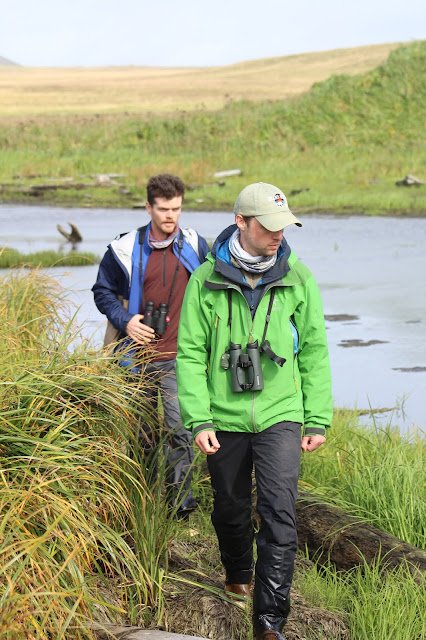


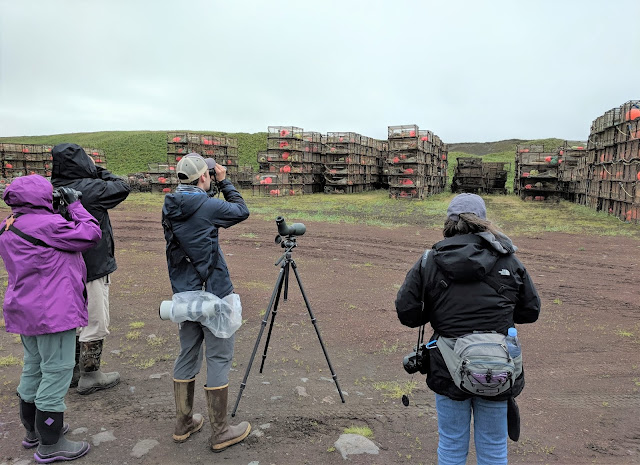













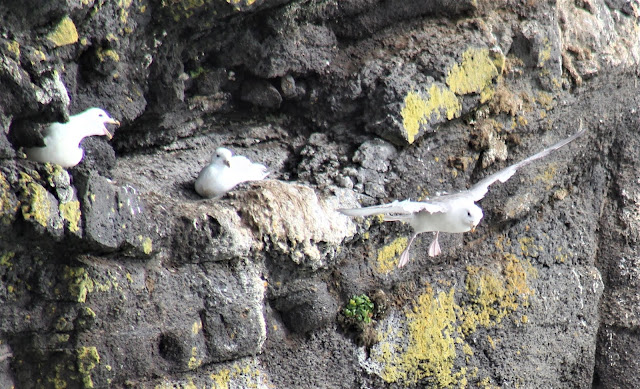




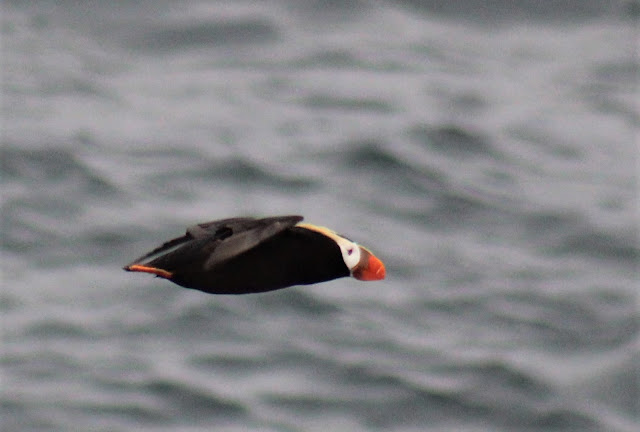


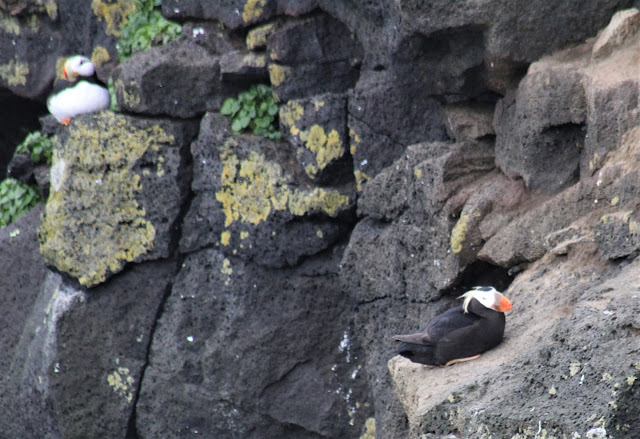
























No comments:
Post a Comment